





The game of flying paper planes has been taken to the next level at the all-boys Montfort Junior School (MJS).
Known as the Paper Flight Challenge, it has seen various competitions where students tried to get their planes to fly through a series of hoops as well as one where they tried to maximise the duration their planes remained in flight.
 Students
performing flight testing in the school courtyard as part of the
Paper Flight Challenge.
Students
performing flight testing in the school courtyard as part of the
Paper Flight Challenge.
These were part of Unstructured Play @ Recess, a programme launched by teacher, Mr Norman Loh, February this year, riding on the back of the After School edition.
“It allows students to put design thinking into action through thematic challenges purposefully designed to motivate them into going back and forth in the design thinking process, from ideating to prototyping to testing, and repeating this until they achieve their intended outcome,” explains Mr Loh.
Through the Paper Flight Challenge, students learnt new perspectives about how a winning plane could be built, going so far as to add more paper products and even recycled materials to the structure.
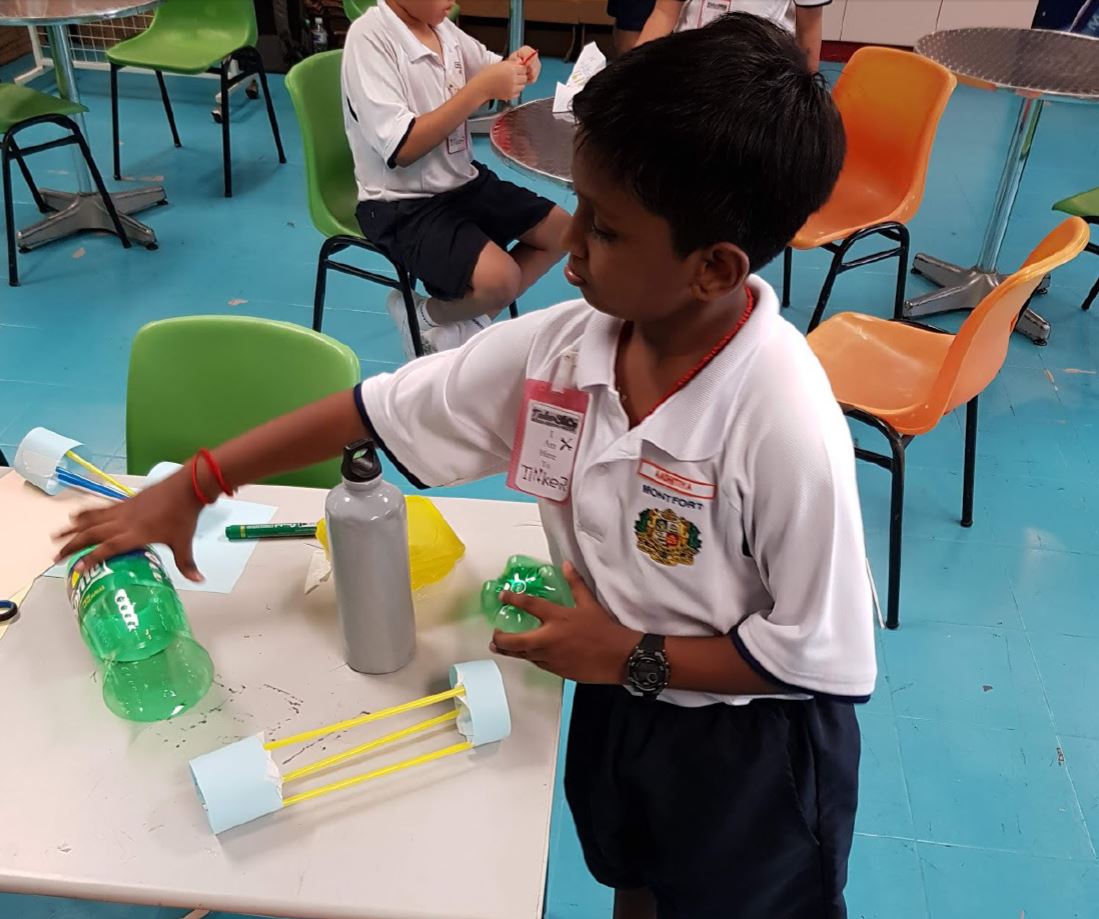 A student with
his flight-inspired design.
A student with
his flight-inspired design.
Unstructured Play @ Recess is made accessible to students from all levels at MJS, with different challenges targeted at the various age groups.
In fact, Unstructured Play has its origins in Tinkershop, literally a workshop that opens after school where they can go to work with their hands and tinker with materials found inside.
“Some students step in with an idea in mind, others enter without a concrete plan but their creativity and critical thinking skills are stimulated by watching their fellow peer inventors, or simply letting their ideas flow,” says Mr Loh.
He decided to start Unstructured Play After School following feedback from students that they wanted more time to experiment and explore.
The Recess edition allows those who cannot stay back after school to have the same experience.
Another activity held as part of the Recess edition was the Balloon-Powered Car Ramp Challenge, where students had to invent balloon-shaped vehicles that could fly off a ramp.
The Unstructured Play After School edition is no less interesting. For instance, students designed “Thank you” signs that car owners can place on the rear windshield of their vehicle to show gratitude to other drivers.
 A spinning
random number and mathematical operator generator was invented to
help lower primary students learn Mathematics.
A spinning
random number and mathematical operator generator was invented to
help lower primary students learn Mathematics.
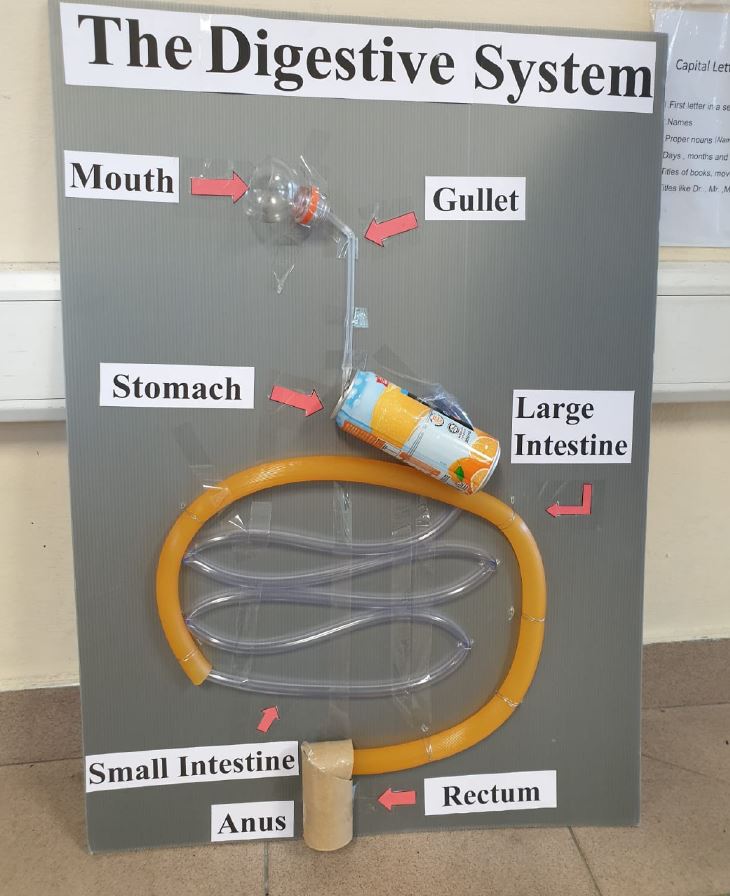 The human
digestive system was reconstructed using recycled materials to show
how food get processed in the body.
The human
digestive system was reconstructed using recycled materials to show
how food get processed in the body.
Mr Loh says the deliberately unstructured nature of the programme is part of the school’s belief in offering a boys-centric education model where the students are given opportunities to “explore, create and work with their hands to concretise their learning”.
He adds, “The openness in product making may seem uncomfortable for some, but our desire is very much for the students to place more emphasis on the process outcomes instead of using the product outcome as a marker of their performance.”
What started as a warm-up exercise for the design thinking workshops Codomo runs has since evolved into a digital, mobile-first platform.
Rolljak, officially launched in September 2020, is what the edtech startup calls “ideation on a roll”, built on the belief that everyone has valuable insights to offer.

Rolljak gamefies design thinking
theory.
Use it to collect and store ideas, collaborate in real-time and track and evaluate them – all with the help of a step-by-step, gamified methodology.
Whether you are an educator, event host or corporate team leader, Rolljak promises to be the solution to enable design thinking from groups ranging in size from three to 1,000.
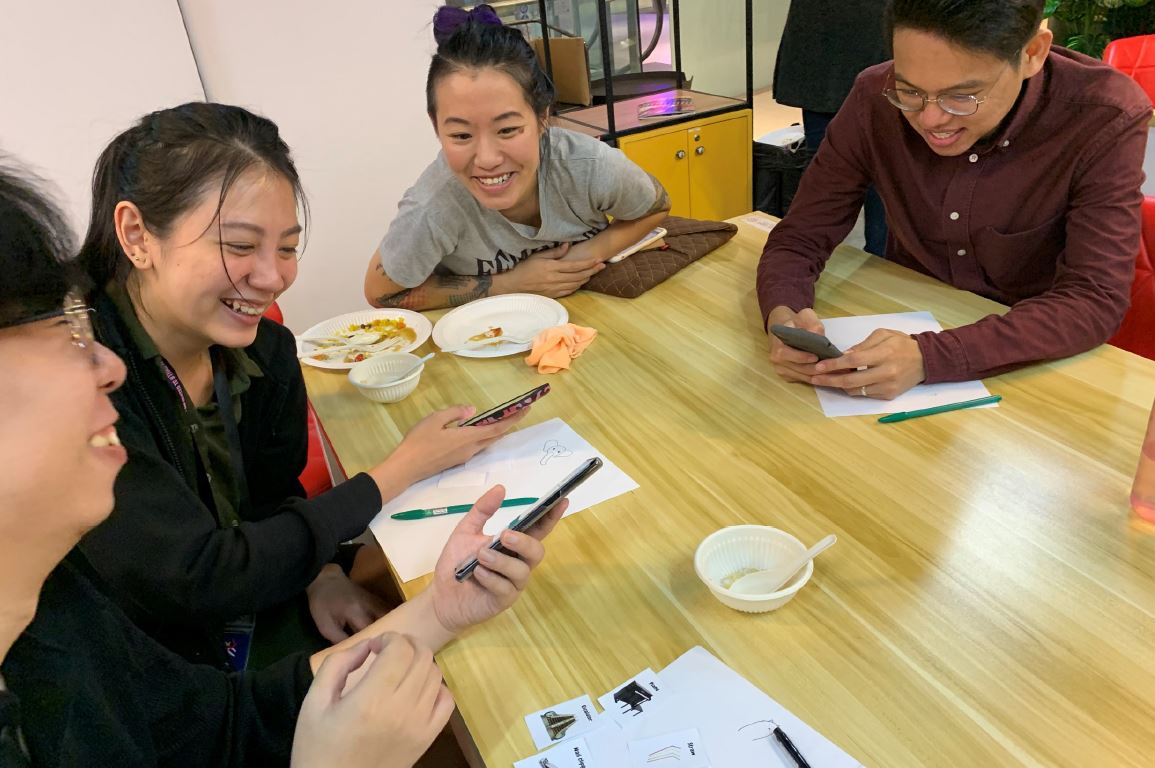 A session where Rolljak A/B tested the experience
between ideating on paper and on a mobile phone.
A session where Rolljak A/B tested the experience
between ideating on paper and on a mobile phone.
“The software is a mix between a game, an open ideation platform, and an audience engagement tool,” says Aditya Batura, co-founder of Codomo.
“It seamlessly integrates widely used ideation techniques as well as design thinking principles to encourage ideation in a novel way.”
Batura shares how Rolljak was used in 2019 to enable St Nicholas Girls’ School to redesign their canteen experience, including reducing the consumption of plastic.
Over 400 students were engaged simultaneously for at assembly, during which they were onboarded and started submitting their ideas or building on those thought up by others.
Within minutes, the teachers crowdsourced and evaluated over 400 ideas to address the design challenge.
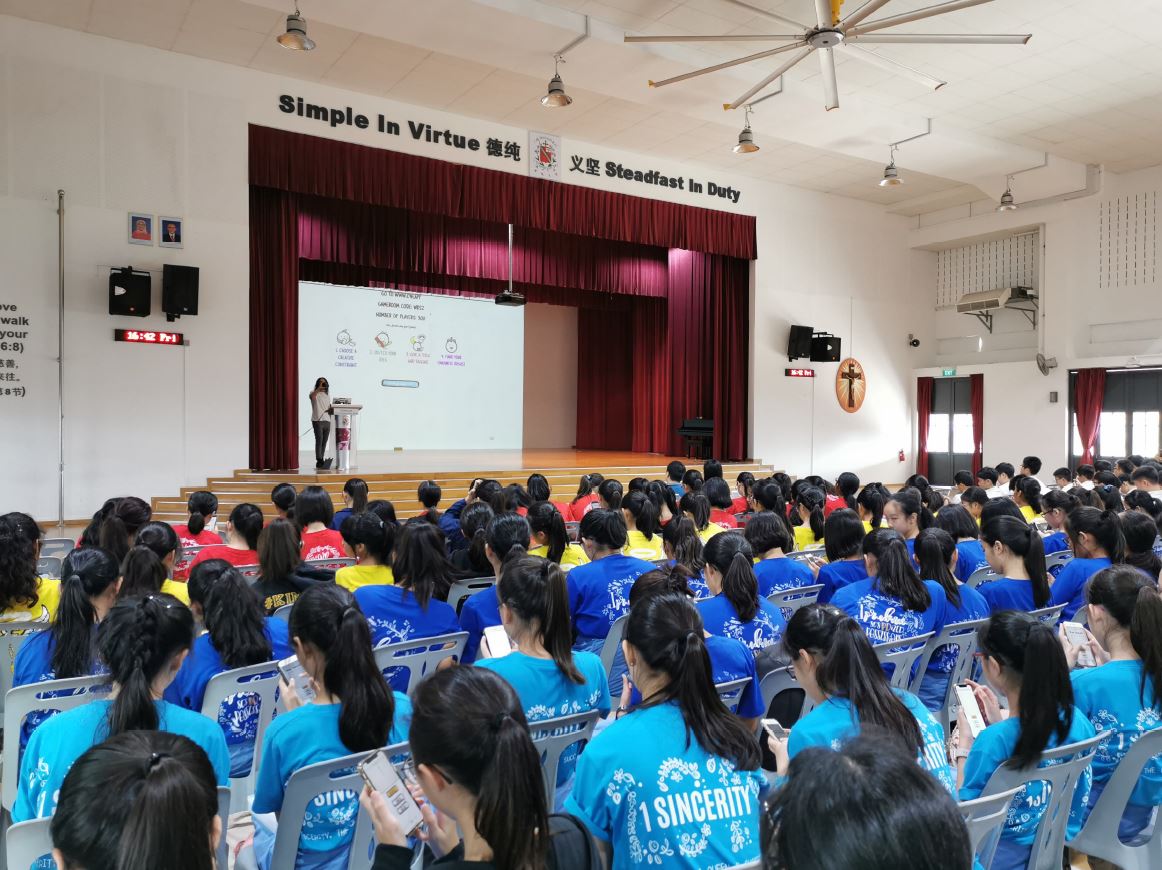 St Nicholas Girls’ School used Rolljak to get
ideas on how to redesign their canteen experience.
St Nicholas Girls’ School used Rolljak to get
ideas on how to redesign their canteen experience.
Rolljak was also invited by Enterprise Singapore to conduct a virtual design thinking introduction session for their Innovation & Growth workshop in August 2020.
The objective was to help education companies identify unique opportunities to transform themselves during the COVID-19 crisis.
“We got all the stakeholders onto Rolljak and they collaboratively brainstormed using the platform’s tools,” reveals Batura.
“By building off one another’s expertise, we saw the cross-pollination of ideas between edtech startups and traditional enrichment schools.
“Some of the concepts that emerged include using micro-learning flash
cards to
streamline the onboarding of new teachers and virtual
reality to learn dancing via an
online avatar.”
To date, Rolljak has been tested by over 1,500 people and Batura says it is fast gaining traction due to its interactivity, versatility and ability to scale innovation from the ground up across any organisation.
“We have since tested many versions of our prototypes with students, working professionals and top executives to make sure it is applicable in a variety of contexts,” he says.
“Our vision for Rolljak is to make design education fun and accessible. We want to prove that creativity is not just for designers. It’s for everyone.”
If there is one thing that primary school students love, it is to play.
Leveraging this, a team of teachers from across disciplines at St. Hilda’s Primary School decided to come up with a set of programmes that would incorporate the principles of design thinking to all students across all levels in January 2019.
“In environments that encourage play, children would naturally take risks – the key to creativity, the fuel for design,” says Mr Andy Ng.
Ultimately, Mr Ng and his two counterparts hope that their students would graduate, armed not just with knowledge and skills but also a user-centric mindset.
In doing so, they hope to sow the seeds of self-confidence and encourage them to effect real change in society later on in their lives.
Mrs Jasmine David admits there were doubts at first, “We asked ourselves how will design thinking be carried out in a classroom of nine-year-olds?”
“What does design thinking look like from the perspective of 10 to 12-year-olds?
“Is it even possible to apply a meaningful design thinking learning experience within a primary school environment?”
Undeterred, they ploughed on and came up with a “Play, Passion, Purpose” progression for the lower, middle and upper primary levels, respectively.
“It allows students to firstly be introduced to the foundational aspects needed for design in a natural environment; followed by the deepening of this learning through student-centric experiences of creation; and finally, to apply all they have learnt to opportunities that empower them to be young changemakers who benefit the community through design thinking,” explains Ms Jasjit Kaur.
PLAY: At the lower primary level, all students are automatically signed up for this and parent volunteers facilitate the process. This is done at recess time through unstructured play at its makerspace, Hildan Playscape. Students entertain themselves with resources like Strawbees, Quirkbot, Dashbot and Cubetto that expose them to computational thinking skills such as decomposition/recomposition, pattern recognition and abstracting. Continuing the spirit of free play from their pre-primary schools allows them to pick up these skills in a natural way.

Lower primary
students at Hildan Playscape, the makerspace where they learn
computational thinking skills.
PASSION: At the middle primary level, the infusion of design thinking elements begins in the compulsory Values In Action (VIA) programme. This is where students, already immersed within the culture of play during lesson time, are able to create something they are passionate about through creative exploration. These can be handmade toys for others using recyclables, or a product to improve their classroom and school environment.

Primary 3 students
sharing their upcycled game creations with kindergarten
students.
PURPOSE: At the upper primary level, students who may not have received as much exposure will get a more rigorous interaction with design thinking through VIA, Art lessons and the Ministry of Education’s Innovation Programme. Through them, they work in teams to solve a problem, undergoing the entire design process in the shoes of a real user in testing out a prototype. For instance, one was designed where a walking stick and umbrella were integrated into one device for use by an elderly person.
 During Art Lessons, students create prototypes to
solve existing constraints or problems they face in the classroom or
by others in society.
During Art Lessons, students create prototypes to
solve existing constraints or problems they face in the classroom or
by others in society.
Mr Ng acknowledges that play allows students to explore different mediums and exercise their creativity, “They develop a passion to create something that is purposeful.
“Through the process of purposeful play, students will also learn to adapt to their peers, take on multiple perspectives and develop character traits such as resilience and discernment.”
Apply this onto an authentic community problem and chances are, students are more ready to look at it from multiple perspectives.
“Using discernment, adaptability, empathy and resilience, students try out various creative methods to solve these problems.
“In the process, they create an innovative solution that impacts someone
in the
community. This problem-solving process develops our
students into changemakers
of tomorrow.”
Formerly a communications designer, Ms Michelle Kan joined Ministry of Education in 2010 as an art teacher and was posted to Anderson Secondary School.
While there, she came up with The Board Game Project in 2017 for the Secondary 2 students.
It involves designing an educational board game to introduce the rich history and heritage of Ang Mo Kio to Primary 1 to 3 students that they had to then pitch to a client.
AMK HERITAGE TRAIL: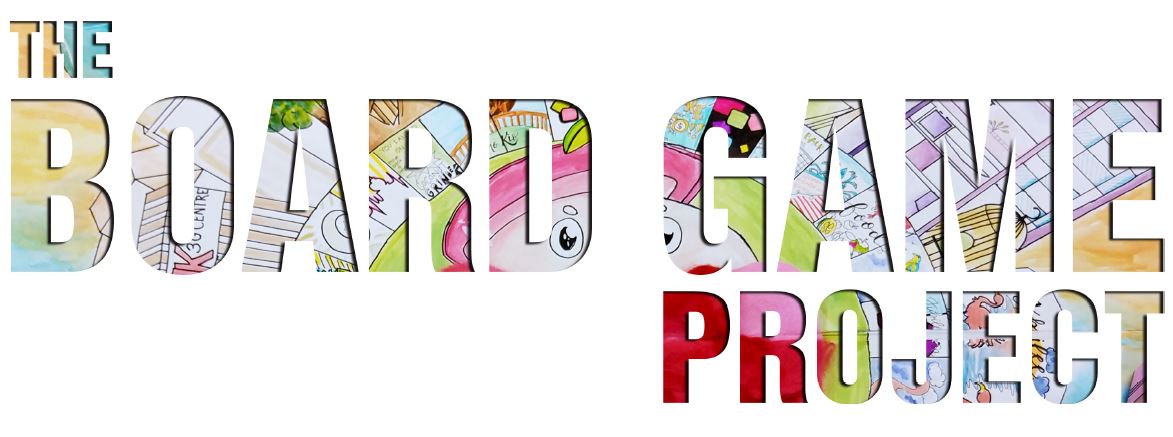
This is done on the back of the Ang Mo Kio Heritage Trail project, organised at the start of the academic year by the Humanities Department, to teach the Secondary 2 students about this unique new town.
We find out more about how Ms Kan put The Board Game Project together.
What compelled you to design The Board Game Project?
The idea of the Board Game project was conceived after feeling
disappointed while observing a lack of empathy amongst some of our
youths. Hence, I developed the project in hope that it would help
students learn how to understand others from the process of creating a
product that would benefit the end-user.
What were some of your considerations as you drafted the design
brief?
I wanted the students, whom I broke up into
groups of four, to understand and empathise with the target audience of
the board game. As they come up with the design, I want them to practise
independent learning and creative problem solving. In addition, I made
sure to create as authentic an experience as possible, emulating the
process of designing a product/experience.
How did you make sure that students learn empathy in the design
process?
To teach them empathy, they were instructed
to design with the target users in mind, encouraging them to think about
how their completed product would cater to them. For instance, I
constantly asked, “Do you think this can be understood by a six to
eight-year-old kid?” To ensure a fair assessment, I gave each team
member a theme to oversee, and ensured the individual grade had a higher
weightage than the group component.
As a facilitator and advisor, how do you perform your role in the
classroom?
The project was split into stages with
manageable expectations. I scaffolded their learning through the whole
design process – from the research to idea-proposal stage, right up to
the final sales pitch – by designing templates with key questions that
guided their thinking process.
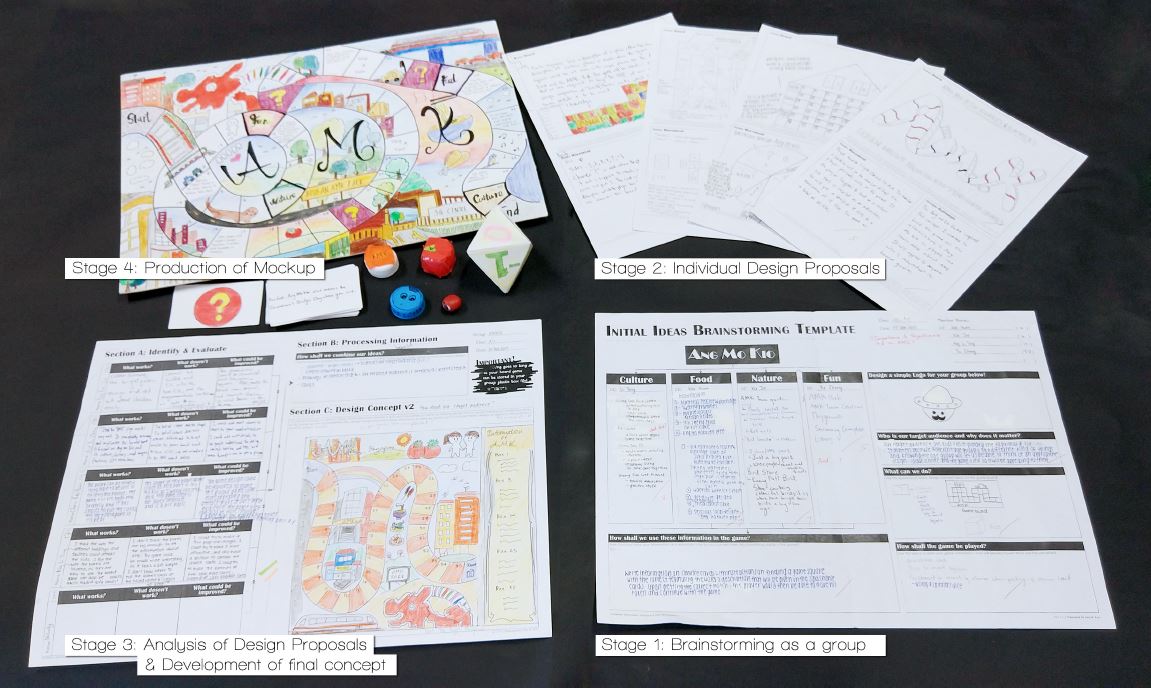 Some of the
templates provided to the students to facilitate their design of the
board game.
Some of the
templates provided to the students to facilitate their design of the
board game.
How do you try to make the experience authentic for the
students?
Once they completed their mock-ups, the
students pitched their idea to a teacher I invited as the ‘client’. They
then had one minute to convince the ‘client’ that their board game
addressed the given brief in the most effective way. The students also
evaluated one another’s games.
 The judging
score sheet for the ‘clients’.
The judging
score sheet for the ‘clients’.
 Setup of the
Art Room in preparation for the sales pitch session
Setup of the
Art Room in preparation for the sales pitch session
What next for The Board Game Project?
The project concept is
evolving as I tweak it every two years to improve the process.
Moving forward, I hope to expand this project to formally collaborate
with other subjects like English, Mathematics and Science, so students
can synthesise what they have learnt and use the knowledge in the
development of ideas.
Click here to read more about the other stories